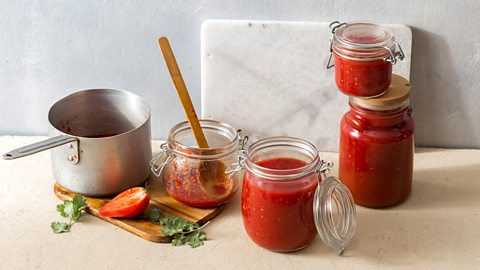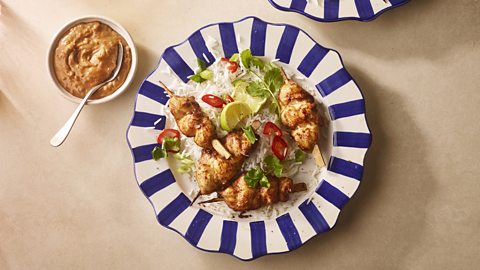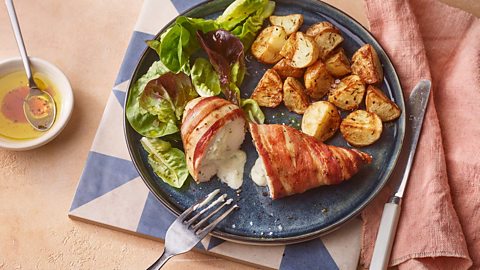How to save money on big family meals
Whether you regularly cook for a large household or love to have friends over for dinner, feeding a crowd can be costly. Here, we look at ways to make budgets go further for everything from parties to family suppers.

At this time of year, we can look forward to lots of bank holidays – with people often spending the days catching up with family and friends. As lovely as this is, it often translates to having more mouths to feed and higher food shopping costs. But, if you want to create delicious big dishes on a budget, there are plenty of money-saving tricks you can try.
Budget cooking expert Lorna Cooper has a family of six to feed every day, which can be expensive. And when the cost of some produce began spiralling, she knew she had to tweak her approach. Over time, she has gathered plenty of experience making large sharing meals that go down a treat but come in at a reasonable cost per portion. From catering for parties to making sit-down dinners, she's done it all – and always on a budget.
Cooking for an event
The idea of organising the food for a bash can be a daunting one, even before you start to think about budgets. There are ways to make sure everyone is fed and happy though, without having to cough up a small fortune for food.
Think fun-size
“People love miniature food,” says Lorna, who thinks smaller nibbles are perfect when you’re hosting a party for a big group.
“I started out making miniature pies with leftovers from Sunday dinner. Using a muffin tray, I’d put shortcrust pastry into the sections and then add a spoonful of filling – a bit of chicken and stuffing, maybe some potatoes and veg and then a bit of gravy. Then, I’d put a pastry lid on top and stick them in the oven.”
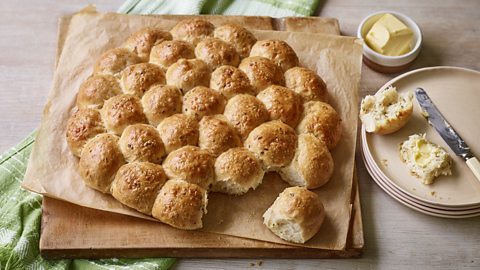
These bites went down such a storm with her family that Lorna started experimenting with different fillings. “I began putting other leftovers in them, even just mashed potato and cheese and onion, or leftover curry. I even made macaroni cheese pies.”
For big gatherings, lasagne ‘cupcakes’ are always popular with Lorna’s guests, too. “You take a sheet of lasagne, soften it and then place it around the sides and the bottom of the muffin tray compartments. You build it up with bolognaise, white sauce and pasta layers.
“People love looking at them and they’ll only take one. Whereas if you put out a big lasagne, people take a big chunk, so you end up having to cook loads. With the miniature versions you need far less in the way of ingredients.
“You could also use wraps in the same way as pasta or pastry, or perhaps cut them into smaller circles, cover them with a bit of pizza sauce and then top with cheese to make miniature pizzas.”
Please picky eaters
Speaking of pizza, a DIY pizza bar is a great way to feed plenty of people while sticking to a budget. It's a particularly nifty idea for kids' parties, as it doubles up as an activity for the little ones.
“Make the dough using the yoghurt and flour method. Then keep the toppings nice and simple, perhaps making use of any leftovers. For example, if I have half a roast pepper or some chicken in the fridge, I don’t stick it on someone’s plate to use it up, I pop it in a bag and freeze it to use as a pizza topping.”
Fussy eaters are well catered for too, as they can pick what they want to go on their pizza.
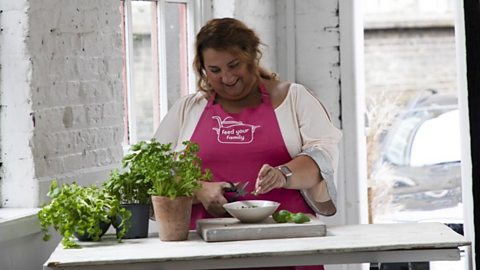
Sit-down meals to feed a crowd
When it comes to making big dinners for family or friends, a slightly different approach is needed. To make her food budget work harder for family meals without losing variety and excitement, Lorna made some smart updates to her shopping and cooking habits, which she recommends giving a go.
Swap to budget brands
Supermarket own-brands are are often as good as their more expensive counterparts, thinks Lorna. So try not to be swayed by labels.
“There's not a lot of things in the budget ranges I wouldn't recommend to people,” she says. “When it comes to things like flour, pasta, rice and tinned plum tomatoes, it really doesn’t really matter which brand you go for.”
Make it yourself
“I stopped buying jars of sauces and packet mixes – cooking them from scratch was loads cheaper and it allowed me to hide veg in dishes for fussy eaters. I’d buy a yellow sticker pack of stir-fry veg for 10p and cook it up, blend it down and put it in passata with lots of tomato paste (which hides the taste of the veg). I’d also add things like butternut squash to cheese sauce.”
If you're not sure how to recreate a favourite pre-made product at home, take a look at the label, Lorna recommends.
“I examined ingredients on jars to work out how to make things myself for less money. For something like creamy tomato pasta bake, I’d buy things like tinned tomatoes, cream cheese and garlic powder. It turned out tastier than the jar version, too.”
Even making your own sandwich fillings can save you cash, this frugal cook points out. “Things like sliced ham can be expensive. Instead, get a cheap gammon joint, cook it in the slow cooker and, once cooled, slice it and put it into sandwiches and then freeze the rest.”
Know when to cut corners
While you can save by cooking some foods from scratch, other times it's cheaper (not to mention quicker!) to buy pre-made. Just remember to keep an eye on the cost of ingredients.
“Making your own shortcrust pastry has always been cheaper than shop-bought, but with the cost of butter rising, it might soon be more cost effective to buy ready-made.”
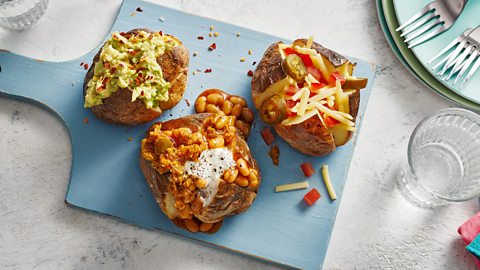
Bulk it out and chop it up
Meat products are likely some of the most expensive items in our shopping baskets each week, but you don't have to cut it out of your diet to bring that grocery bill down.
“I reduced the amount of meat we ate and used cheaper ingredients to bulk out meals,” says Lorna. “I used to use a large 750g pack of mince for lasagne, but then I started swapping half the mince for red lentils, and it works a treat!
“With cottage pie, I replace half the mince with porridge oats and add some gravy granules and lots of fluids. It's really nice and just as filling. Now, I get two cottage pies instead of one for the same amount of mince.”
It's important to consider how dishes look too. While no one will notice too much if you've bulked out a lasagne with lentils, Lorna found that when she used fewer sausages in casseroles and pasta dishes and added more veg instead, her family felt short changed. They could see they only had one banger each when they were used to more.
“So, I began cutting sausages lengthways and then into three or four chunks. Everyone is always happy because they can see lots of sausage.”
Switch to slow-cooking
With the rising cost of energy, people are trying to use their oven less and make the most of more economical appliances like slow cookers and air fryers. For Lorna, it’s now only worth putting the oven on if she's filling it up, as opposed to just cooking one dish. This means she uses her slow cooker much more often.
“Somebody once told me they buy a big bag of jacket potatoes and then load them up into a slow cooker. Just put a bit of oil on the potatoes and rub in some salt and pepper, prick them and that’s it. You can just stack them up to the top! Once cooked, you can freeze them and microwave when required.”
Air fryers are also great for jacket potatoes, cooking them quickly and efficiently with a fraction of the energy an oven would use. We have loads of ideas for using these versatile bits of kit if you're looking to cut down on your oven use.
Originally published September 2022
